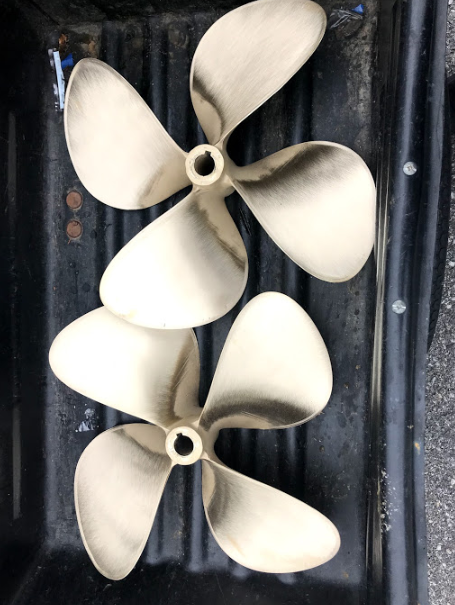

Boaters must carefully review all options and determine which devices make the most sense for their particular boating experience. There is no “one-size fits all” solution to eliminate the risk of propeller injuries. Consider an engine cut-off switch or another propeller safety device, and make sure all passengers (including you) wear a lifejacket at all times.Establish and communicate rules for swim platform use, boarding ladders, and seating.Accidents can happen in the blink of an eye… and so can propeller strikes. Never permit passengers to ride on the bow, gunwale, transom, seatbacks, or other locations where they might fall overboard and under the boat.Before you set out for the day, take a moment to inform your passengers of the location and dangers of the propellers, and call attention to any propeller warning labels around your boat.Personally look at the area around your boats' propeller before starting the engine.There are several things you can do to minimize the risk of propeller injury. Be alert for other boaters engaged in towing sports like tubing, wakeboarding, etc., and take every precaution to avoid them. The best rule of thumb regarding your propeller is: don’t run the engine when people are near the boat. Similarly, safe boaters know to watch out for people in the water.
#INBOARD PROPELLER DRIVERS#
Safe drivers know to always be on the look out for pedestrians, especially in populated, urban environments.
#INBOARD PROPELLER DRIVER#
Propeller safety is not something to be taken lightly.Īs a boat operator, you are responsible for every aspect of your boat just as the driver of a car is responsible for his or her vehicle at all times. Wireless devices are also available in which an electronic device worn by the driver (and other occupants) takes the place of the lanyard.Ī typical three-blade propeller running at 3,200 rpm can inflict 160 cuts in one second, traveling from head to toe on an average person in less than one tenth of a second. Why is this important? Because if you’re thrown overboard – and the engine is still running – you are now at serious risk for a propeller strike.

The second the lanyard device is pulled from its receptacle, the engine shuts off. Let’s say you’re suddenly thrown overboard after an encounter with rough water or an accident on your boat. What exactly is an engine cut-off switch? Most commonly it is a lanyard connected to the driver, and to a switch on the control panel/dash.

And finally, an engine cut-off switch can save the driver’s life, should he or she be thrown from the boat. It is NEVER safe to board or exit from the water while engines are idling because the propeller may continue to spin even when the boat is in neutral. Always stop, turn around and SHUT OFF the engine before pulling someone to safety. NEVER reverse your boat to pick up a passenger. If you hesitated to answer even one of the questions above, you may be putting lives in danger. It is safe for passengers to board or exit from the water if engines are idling.Ī _ will stop a propeller should the driver of a boat be thrown overboard or pulled away from the boat's controls. Shut off the engine and then bring him to safety. Slowly turn the boat around and approach while keeping the passenger in sight.

Allow him to swim to the side and slowly pull him to safety.Ĭ. Stop within five feet and allow him to swim to the side of the boat.ī. Slowly reverse, keeping him in sight at all times. 1.) If a passenger falls overboard from your boat, you should…Ī.


 0 kommentar(er)
0 kommentar(er)
